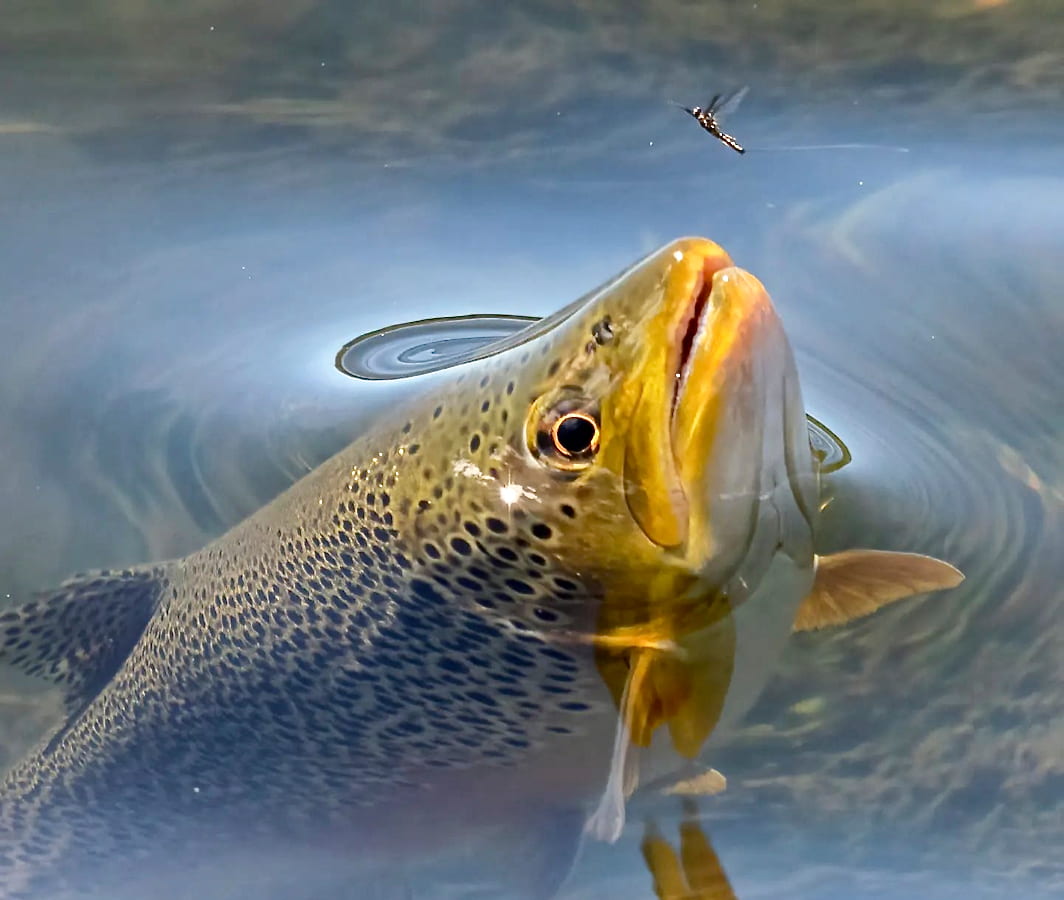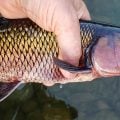Hatching a Plan: How to Identify Different Rise Forms

Image by Peter Broomhall @merseyfly
Most anglers think of matching the hatch as simply identifying a certain insect and then choosing a corresponding fly. Of course, many of these anglers will drift their matched fly over a trout’s head only to watch the fish rise to the surface, ignore the fly, and then drop back to the bottom while throwing a finny middle finger. Many anglers don’t understand why this happens, especially when they know they’ve identified the right species of insect. What they may not realize is that no matter how perfectly detailed the fly, most trout will still ignore it if it’s not the right stage of an insect’s life.
From emergers to duns to spinners, every mayfly on the water goes through its own life cycle with different trout concentrating on each stage of insect at different times. Luckily for us, though, trout feed on these insect stages in diverse but very recognizable ways known as rise forms.
What Are Rise Forms?
Rise forms are the way a trout moves water when it’s feeding on an insect. While this variety of dimples, bulges, and splashes on the water’s surface can be confusing, understanding rise forms is probably the most important skill for a dry fly angler because it helps catch you more fish than simply being able to distinguish insects themselves. Rise forms tell you what stage of a bug’s life the trout are concentrating on. And once you know that, paired with what species of bug their eating, you’ll be unstoppable.
The best way to learn about rise forms is by watching the river. Find a good looking run you know has a few trout in it and then, instead of immediately trying to catch them, watch the water for a while. As the trout rise you’ll notice differences between the splashes and ripples left by feeding trout as they target different bugs on the surface of the water. By understanding these different rise forms and what they mean, you’ll soon be able to pick out the right fly from your box every single time.
Dimple Rises
Dimple rises are usually the first rises you’ll see during the day. Occurring when trout are just beginning to feed at the top of the water column, these rises will look like subtle raindrops with long, slow ripples or small bulges in the water’s surface usually not accompanied by any type of splash or bubbles. Occasionally you may even see a trout’s back or tailfins break the surface of the water but not its head or nose. Dimple rises are a sure sign that a hatch has just begun and that the trout are feeding on emergers.
Emergers are the middle stage of an insect’s life when a nymph has made it to the top of the water column and is trying to break through to the surface to shed its exoskeleton. Trout feeding on these bugs won’t break the surface at all and are instead snacking on bugs millimeters below the water film.
To catch dimple rising trout, drift an emerger pattern of the corresponding insect, such as a Bat Wing or Foam Emerger. You can also have a lot of luck swinging or drifting a Soft Hackle just below the surface during these times as well.
Splashy Rises
Splashy rises are the classic, bubble-filled rises every dry fly angler loves to see. They happen when trout first begin to break the surface film to snap their jaws closed on insects drifting on top of the water. Splashy rises are usually accompanied by bubbles and look like large raindrops or even hail falling into the water. Seeing these splashy rises is a great indicator that the trout have begun to feed on duns or subadult insects that are now drifting on top of the water.
Duns or subadult insects are bugs that have passed through the emerger stage, shucked their exoskeletons and are now on a careening path of hastily trying to dry their wings before flying away. Often, you’ll see fish feeding frantically on these insects as they try to get as many down their gullets as they can before the bugs take off.
Catching splashy rising trout is what dreams are made of. With the fish aggressively moving towards and even chasing the insects, you should have no problem hooking up with your basic adult insect patterns such as the classic Adams or Parachute. Still, be sure to take note of the size and shape of the insects on the surface before tying one on.
Mouthy Rises
Mouthy rises are the rise forms that usually go unnoticed by most anglers. These occur when trout are feeding on a blanket hatch on the surface and are lifting their whole mouth out of the water to do so. You’ll recognize these rises by seeing the dark head of the fish gently breaking the surface. It’s an exciting time to drift flies because it usually means that larger trout that know the drill have positioned themselves in the best spots in the river, meaning you have a great opportunity to land a dry fly monster.
Mouthy rising fish are usually feeding on either crippled duns that haven’t managed to shed their shucks yet or spinners, which are adult mayflies that have died after breeding. Since the fish aren’t worried about the insects escaping, the trout will usually be positioned in one spot and continuously poking their noses out of the water to inhale every bug that drifts overhead.
Mouthy rising trout are great fish to target as you’ll very likely get an eat with no questions asked. However, it’s still a good thing to make sure you have the right bugs with you as patterns like the Mayfly Cripple and the Rusty Spinner are going to be the best producers.
Slowing Down
We all want to rush down to the river and catch as many fish as we can. Yet, when you tap the brakes a bit and take time to watch the water and the trout, you always have much better results. As anxious as you may be to start stripping line off your reel and whipping casts towards a rising fish, taking a bit of extra time to observe the river will simply ensure your success. When you better understand why a trout is feeding this way or that way, you’ll also understand why dry fly success goes so far beyond simply matching the hatch.











